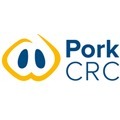 Australian pork producers are competitive with most of the European Union on cost and with Canada and USA on reproduction and feed efficiency, according to global benchmarking results for calendar year 2014.
Australian pork producers are competitive with most of the European Union on cost and with Canada and USA on reproduction and feed efficiency, according to global benchmarking results for calendar year 2014.
This is the encouraging message that Roger Campbell, CEO of the Cooperative Research Centre for High Integrity Australian Pork (Pork CRC) will deliver in his opening address, ‘Where we sit internationally and how the best in Australia do it; some good news and opportunities’, at the South Australian Pig Industry Day on February 26.

“Indeed, our own Pork CRC benchmarking results also suggest the best Australian producers are a force to be reckoned with and are willing to share their recipes for success to the industry in general,” Dr Campbell added.
While admitting it was difficult to match USA and Canada on cost, due to their relatively low cost grain and heavier carcasses, which resulted in low feed and overhead costs per unit of pork produced, he said Australia’s pork industry was in a good position and had the capacity to further improve its financial and physical business indicators.
“Although, the Danes and Dutch lead the world in the number of pigs weaned per sow per year (29-30) due to the large numbers of pigs born per litter, several Pork CRC benchmarking participants are matching or getting close to these figures without the extreme litter sizes reported by the Danes and Dutch.
“Our producers are demonstrating there are many ways to enhance the number of pigs weaned per sow per year and are certainly making the most from the sows they have.
“I congratulate them for their on-farm ingenuity and for adopting much of the world class R&D that’s emerged from Pork CRC via our research partners,” Dr Campbell said.
One such innovator, leading Victorian pork producer Tom Smith, will outline the practical changes he and his sons have made to optimise breeding herd performance.
Pork CRC Manager, Commercialisation and Research Impact, Charles Rikard-Bell, will also deliver an address, titled ‘Making your feed grain work harder for you before you buy or use it, with AusScan’.
Pork CRC research developed AusScan the world’s first in-vivo energy values for cereal grains and reactive lysine values for ‘heat damaged’ canola and soybean meal using near infrared spectroscopy (NIRS).
Pork CRC has a business agreement with UK company Aunir, which now makes AusScan NIRS calibrations available on-line.
According to Dr Rikard-Bell, Australian pork producers, feedmills and laboratories are increasingly embracing the initiative and connecting to AusScan Online.
“Using near infrared spectroscopy (NIR) to scan grains and upload spectra files to AusScan Online allows rapid determination of in vivo energy values of the grain and hence how pigs will perform – before producers buy the grain,” he said.
“Likewise, producers can access AusScan Online to determine the reactive lysine values for heat damaged canola and soybean meal,” Dr Rikard-Bell said.
“This breakthrough technology significantly improves the cost effectiveness of feed formulations and a workshop has been planned for February 2016 to help feed millers, producers and nutritionists optimise their use of AusScan technology.”

The AusScan NIR workshop will be held from 2pm to 5pm on February 18 at the Camperdown campus of University of Sydney’s Veterinary Science Conference Centre.
Speakers and topics include Ivan Ward of Agri-Torque (‘Practical application of NIR and data management’), Tony Edwards of ACE Livestock Consulting (‘How best to utilise energy values in your operation’) and Chris Piotrowski of Aunir UK (‘The future of NIR spectroscopy – poultry and swine’).
February 1, 2016 - Pork CRC


